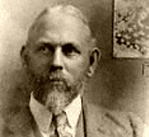 |
| Ernest Fenellosa |
Introduction
Do you like Japanese arts? I bet perhaps most Japanese people will say “not really”. For Japanese people, art is not familiar at all. In my opinion, most museums in Japan are costly so we cannot visit easily if we are not interested in arts. However we still have many historical Japanese arts because some people tried to protect them and hand them down to posterity. I want to introduce one of those people. That person is Ernest Fenellosa.
About Ernest Fenellosa
Ernest Francisco Fenellosa was born in Massachusetts, America in 1853. He studied philosophy and sociology at Harvard College, where he graduated at the top of the class. At the time, he got interested in art so he entered the art school of the Boston Museum of Fine Arts. When he was 25, his father Manuel Francisco Ciriaco Fenellosa committed suicide because he could not adapt to his circumstances. According to Christianity, suicide is sin. That is why Ernest needed a new place. Fortunately, he found the information that Tokyo University was recruiting professors. After that he moved to Japan and started working as a professor of philosophy. At the same time, he was attracted by Japanese art. He started studying Japanese art. He found the fact that Japanese people did not respect their art at all which was shocking and disappointing for him. Then he decided to protect Japanese art and tell it to the World. He protected some statues of Buddha and Buddhist images.
Discussion
My discussion questions were “Have you ever been to museum?” and “Which do you like better, Japanese art or Western art?”
The first one question was because I wanted to know how much my members were familiar with art. I was surprised because two people said they have never been there. I guess that many people think art is not worth paying to view.
I expected the answer for the second one that my members would say Western art is better. However everyone answered Japanese one is more attractive which was surprising for me.
Reflection
According to this project, I learned how Japan obtained cooperation from many foreigners. Today we get inspiration from other countries, which is great thing. However I realized that we hardly explain about Japan. We need to focus on Japanese culture. Because if people pay attention to it, then it will be protected and respected. I hope that Japanese people get more interested in Japanese culture. I want to thank Mr. Fenellosa.
References
“Ernest Fenellosa”, (n.d.). In Wikipedia, accessed June, 2015 from http://en.wikipedia.org/wiki/Ernest_Fenollosa
Meijinooyatoigaikokujin, (n.d.) Ernest Francisco Fenellosa no kozai [The merits and demerits of Ernest Francisco Fenellosa] accessed June, 2015 from http://photo-make.jp/hm_2/ma_23.html




